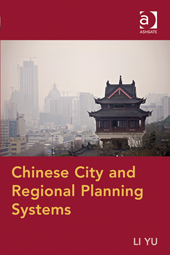Chinese City and Regional Planning Systems

This book describes the formal planning policy processes in the Chinese context. It illustrates them in reference to key statutory and non-statutory plans and instruments such as the City Comprehensive Plan, as well as with a few case studies like the Xiamen Urban Development Strategic Plan.
It starts off with an introduction to explain the development of modern China, as well as the continued transformation from an agrarian to an industrial economy, and from a centrally planned to a market-oriented economic structure. Devolution and marketization, as well as the position of China in the global economy, are key themes that emerge here and recur throughout the book.
The geographically, socially, culturally and economically vast and diverse country is confronted with challenges related to poverty, unemployment, migration, food security and environmental sustainability, among others. Due to their sheer scale and scope, these areas seem terrifyingly complex to govern and address in planning systems. Chinese challenges related to high levels of urbanization particularly manifest themselves in shortages of land and water as well as their unequal distribution. Hence, the government has sought to provide a structure that balances productivity and population by controlling the size of large cities and promoting the development of smaller ones. This is one example of how the author elaborates on the central role that formal planning has played and continues to play in China’s development. The author further highlights that some indicators point towards important successes, such as decreases in under-5 and infant mortality, higher levels of school enrolment, and an increase in housing stock.
The book reflects on how regional and city planning systems and institutions in five levels of government and in different administrative sectors have historically evolved in response to the varying political and economic systems of the country. It also explores how changing priorities and ideologies for development in turn reflect on regional and urban planning in accordance with the abovementioned drivers of change.
Chinese City and Regional Planning Systems makes the point that central government planning is often trapped in time-consuming and complex planning processes that have difficulties keeping up with the rapidity of change and planning uncertainties. Hence, local governments and other actors seek alternative, innovative, more bottom-up solutions to keep pace with challenges. On the other hand, the engagement of a wider variety of stakeholders also sees the rising power of large private investors, where conflict and competition are central elements of pursuing neoliberal interests that threaten socially inclusive, interest-balanced and efficient regional and city planning. Importantly, the role of local governments seems to have changed in these complex processes from simply executing centralized plans towards promoting and managing local development. Li Yu concludes with a call for reforming Chinese city and regional planning systems; however, the author also acknowledges that this has to be addressed within a more general reform, as planning is deeply embedded in the wider political and administrative systems.
Overall, this book is written in accessible language and with a clear structure. It might provide particularly useful reading for people not familiar with the Chinese system, its economy and its history.
Book note prepared by Julia Wesely
Search the Book notes database
Our Book notes database contains details and summaries of all the publications included in Book notes since 1993 - with details on how to obtain/download.
Use the search form above, or visit the Book notes landing page for more options and latest content.
For a searchable database for papers in Environment and Urbanization, go to http://eau.sagepub.com/

